Topsy turvy succulent is a beautiful little succulent native to Mexican region. This succulent belongs to the Echeveria succulent group and It’s scientific name is Echeveria runyonii.
This plant is an award winning plant and it is very famous as an easy growing plant. They call Topsy turvy as Mexican ‘Hens and Chicks’, Silver Spoons Echeveria, and Upside-Down Echeveria as well.
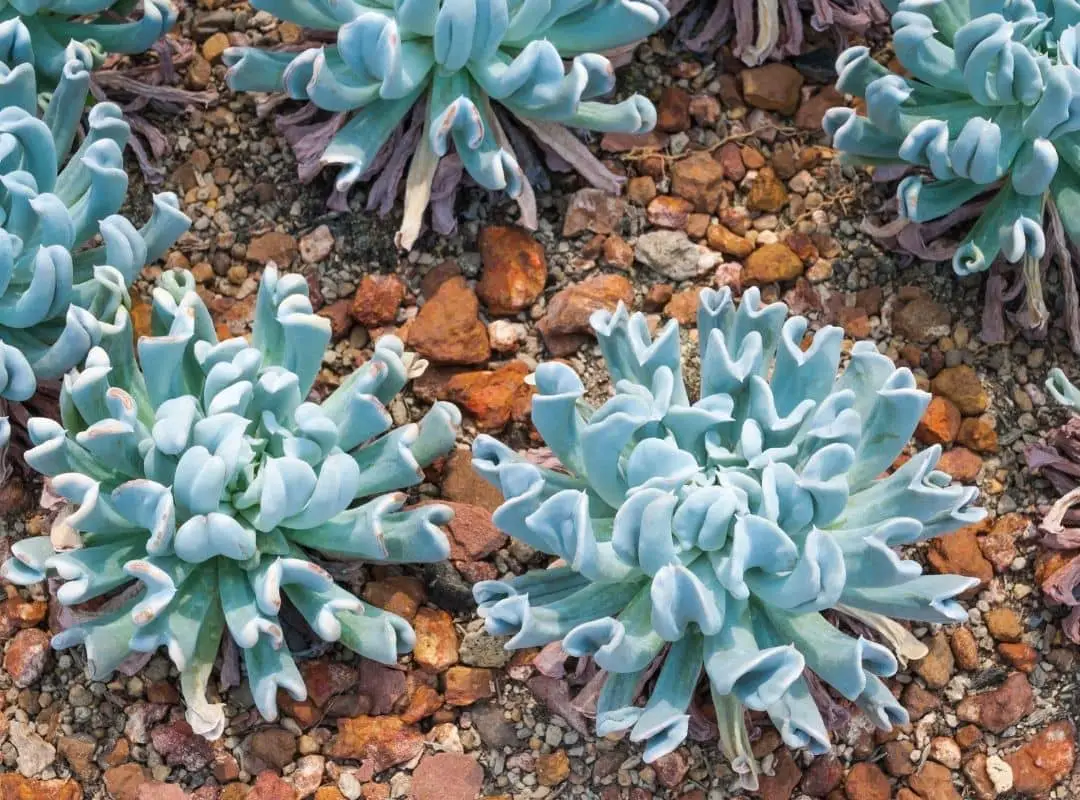
These are not fuzzy plants and they are tolerant of any environmental conditions. This will be one graceful plant once it grows in a small container or in a dish garden.
It is a very common sight to see at least one topsy turvy plant in a succulent garden. They are deer resistant and they hardly contact any disease too.
Awards received
Echeveria runyonii succulent plant won the award of Garden Merit of the Royal Horticultural Society from the UK. Not only that but also it was the “Plant of the Month” in October 2010, organized by The Garden Path magazine.
How do I identify a topsy turvy ?
We could identify a Topsy turvy plant simply by looking at the base of the plant cautiously. If you see a plant with just one main stem where leaves have grown in such a way which resembles a flower formation along with curled downwards leaves, it is a topsy turvy .
Their leaves are soft blue-gray in color. If you see orange – yellow colors on that plant that should be due to the flowering season.
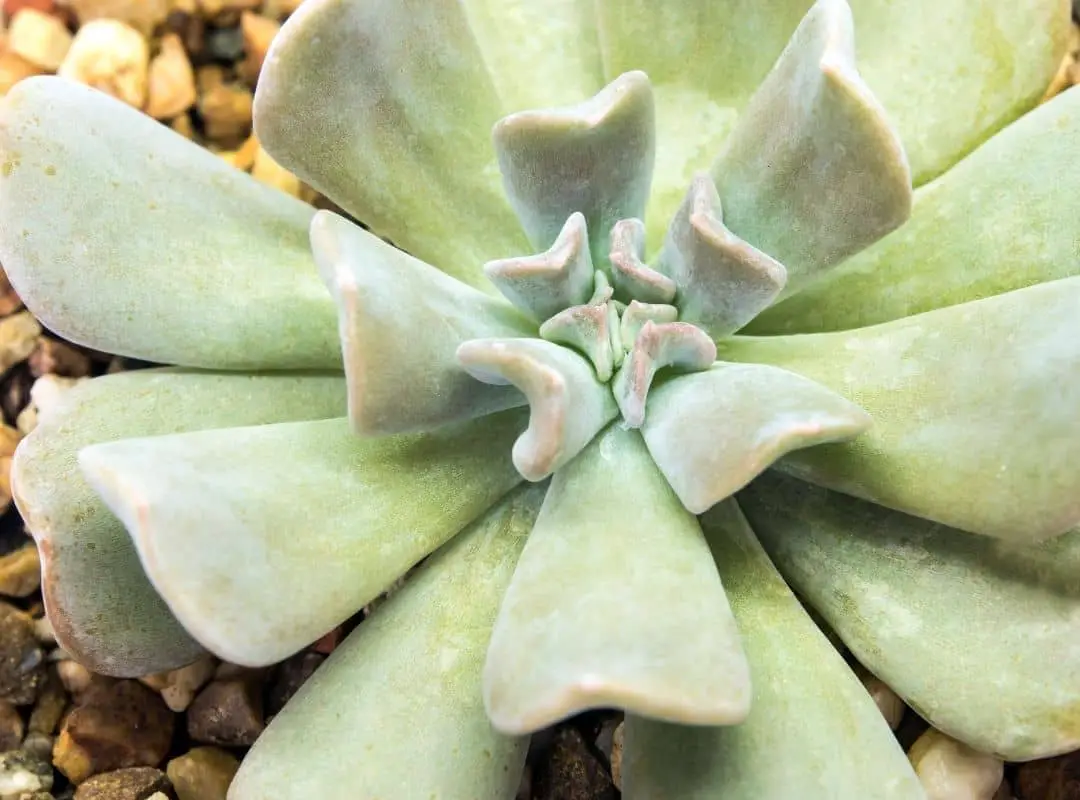
How do you take care of a topsy turvy ?
We can take care of this succulent simply by providing the fundamental necessities, such as sunlight, watering appropriately , providing the correct soil type etc.
Size
Topsy Turvy’ , Echeveria Runyonii is well known as a graceful succulent among the succulent plant lovers. Once it comes to the mature size, it will rise to around 25 cm ( 8-12 inches ) and the width could also be around 25 cm(8 and 12 inches).
Growth
Dark and soggy environments are two factors which are unhealthy for topsy turvy succulents as they really don’t like them. Hence, plant them in a dry and sunny place.
It is obvious as they are native to Mexico. Bright sunlight for around 5 hours would be great for them since that will help to maintain their rosette’s color and shape.
Simultaneously, it will withstand the partial sunlight as well, especially during summer. They are generally are healthy plants. You should do Watering also as appropriate despite the fact that they will thrive in heat conditions.
This is a plant which we can grow indoors , however we have to make sure that they get sufficient light though. The plants tend to grow offsets during spring time. You have a choice of separating those tiny rosettes if you wish to create new plants.
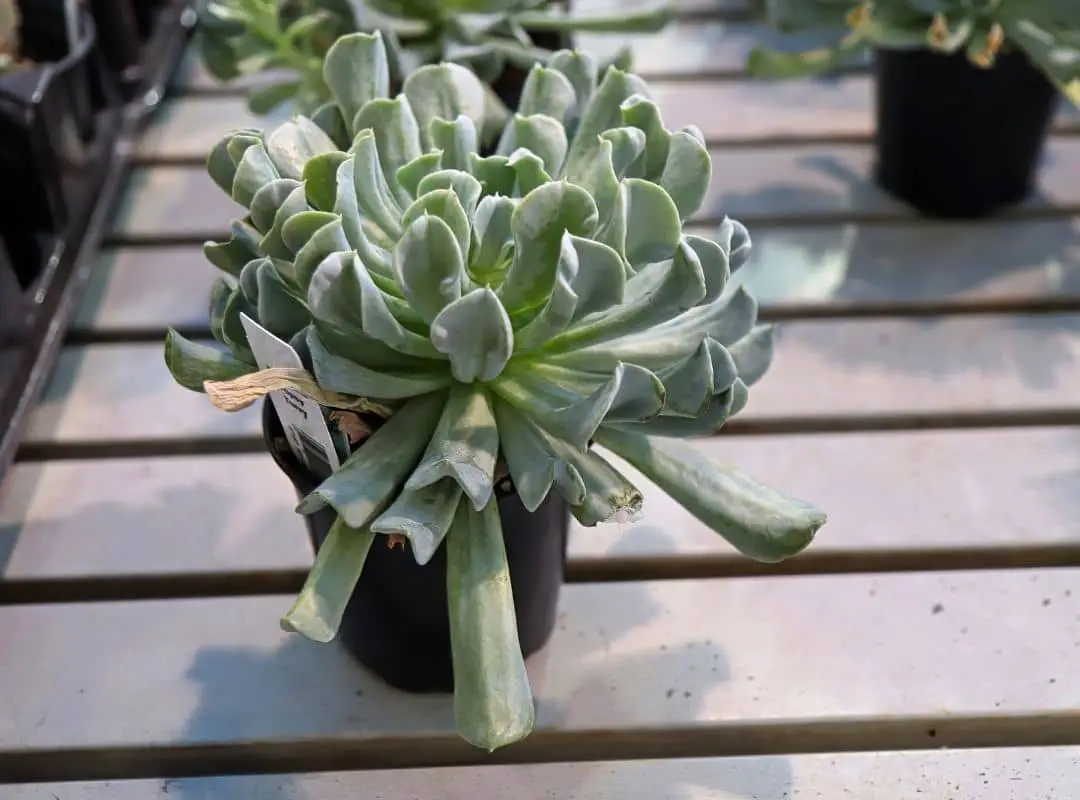
Light Requirement
Echeveria runyonii succulents are sun preferred plants. Daily bright sunlight for a duration of 6 hours would be very essential for their survival. If you observe the plant much closer, you will spot that they are covered with a chalky powder. That is their natural sunscreen.
Both powder and their waxy texture safeguard it from the damages occurring by the sun. It is better to refrain in touching the plant unless it is very essential since they cannot reproduce this substance. Scarring and uneven pigments are some of the repercussions which could occur due to sun damages.
During extreme heat conditions, the best recommended thing to do is to relocate them to a shady place just like with the other succulents.
Temperature and humidity
Keep in mind that these succulents are not cold hardy. Leaving them ignored under frosty and rainy seasons and exposing them for too much for those conditions could be fatal for them. They will require more attention especially during the winter season which is their dormant season.
Best temperature for these succulents would be from 18°C to 21°C (65°F and 70°F). They cannot bear the hard frost.
Nevertheless, they could tolerate an insignificant amount of frost without too much damage for the plants.
Fluctuating temperature will not make any effects on the plants permanently, however their growth rate will be slower.
Is It cold hardy
No they are not, . They cannot resist the hard frost.
Zone
They usually prefer USDA Hardiness Zones 9b-11b from 25 degrees Fahrenheit ( -3.9 degrees Celsius +10 degrees Celsius ) to 50 degrees Fahrenheit.
Watering Requirement
Watering is a prominent fact when we consider succulents in general and if we consider Echeveria runyonii , this doesn’t get fuzzy in case we forget to water them on and off.
This is a water sensitive succulent hence why we need to use soak and dry technique .These plants can withstand heat for longer periods.
If we elaborate more on Soak and dry technique, it is literally we need to ensure that soil is dry enough before we start another session of watering.
Once you water your succulent, let it soak well until the water circulates through soil and until it exists from the drainage holes. Give some time for the succulent to absorb more water from the draining tray and put out the unwanted water.
To reiterate, be mindful to not over water as it will be an absolute disaster for the plant. Rotting and fungal disease are two main repercussions of overwatering. Make sure you water them adequately. When the heat arises particularly during spring and in summer you might need to increase watering frequency, which is known as their growing season.
You should not water the outdoors grown plants in the winter season as they need some break. Don’t let water creep into rosette as it will undoubtedly cause fungal disease or rotting which will deteriorate the plant rapidly.
Ensure that soil is completely dry between watering sessions. It is not possible to state any schedule for watering as it will purely depend on the seasons and on the environmental conditions as well. spend a few minutes and observe the plant closely whether its moisture content is too much or adequate.
Read More : How Often Should I Water My Echeveria Succulent?
Soil Requirement Type / pH
Best soil type to use would be coarse , sandy, porous rocky etc. Well draining soil is also a main necessity of these succulents just like with the other succulents. There won’t be a big impact for the plant Although the Ph of the soil varies from acidic to neutral or to alkaline whilst proving other suitable environmental conditions, the most appropriate PH would be >7.0.
Flowering and Fragrance
One more interesting characteristic about this plant is that they blossom. They will produce orange and yellow flowers on a tall inflorescence. They will form in a star shape way which will add more grace for the plant during the flowering season.
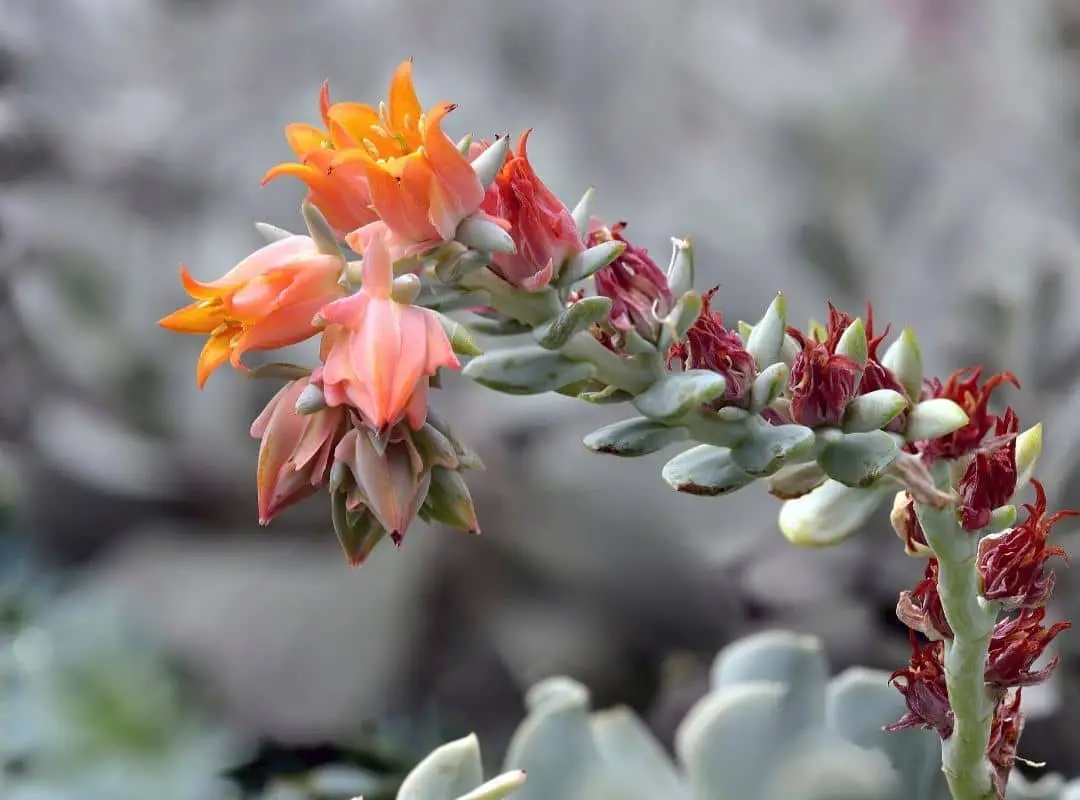
Pot size , potting and Repotting
This will go with small / medium pots of any style. You do not need to do repotting often as we do for some other plants in general. Because it does not grow big. Nevertheless, if you think of repotting or transplanting it outdoors, make sure that the soil is dry enough. Then can remove the plant softly without any damage to the plant. Don’t forget to remove the excess oil also. Spring would be the best season for repotting
Where to Plant
As stated above, this is not a cold resistant plant hence, if you plant in an area where the temperature drops to 20° F (-6.7° C), the most suitable thing to do is to plant them in a container which you could move easily.
Bright sun light for 6 hours and then partial shade would be ideal for them. Hence, when you place this, make sure that it gets the required sunlight,
Fertilizer and time of year
Refrain in planting topsy turvy plants in fertilized potting soil . Keep in mind that all types of fertilizers do not suit succulents. pre-fertilized soil is inappropriate for your plant. Density of the potting soil which we buy from the shops is also very high for these succulents.
Further you should blend potting soil along with sandy and porous soil before going ahead with the potting of your succulent. During the spring, we can apply a fertilizer which consists of a diluted controlled release.
We recommend you to Use a 20-20-20 diluted ¼ strength on mature plants while you can use a mixture of less nitrogen on the plants in youth.
Dormancy
These succulents are winter dormant as they hate hard frost and soggy conditions.
Other plants Pairs Well With
Kalanchoe tomentosa could pai well with this succulent.
Can be toxic to pets
This is not a toxic plant for both humans and for animals as well. They are deer and rabbit resistant too.
Handling the plant
We could handle topsy turvy simply by providing the fundamental necessities such as letting it gain sunlight, watering appropriately, providing the correct soil type etc.
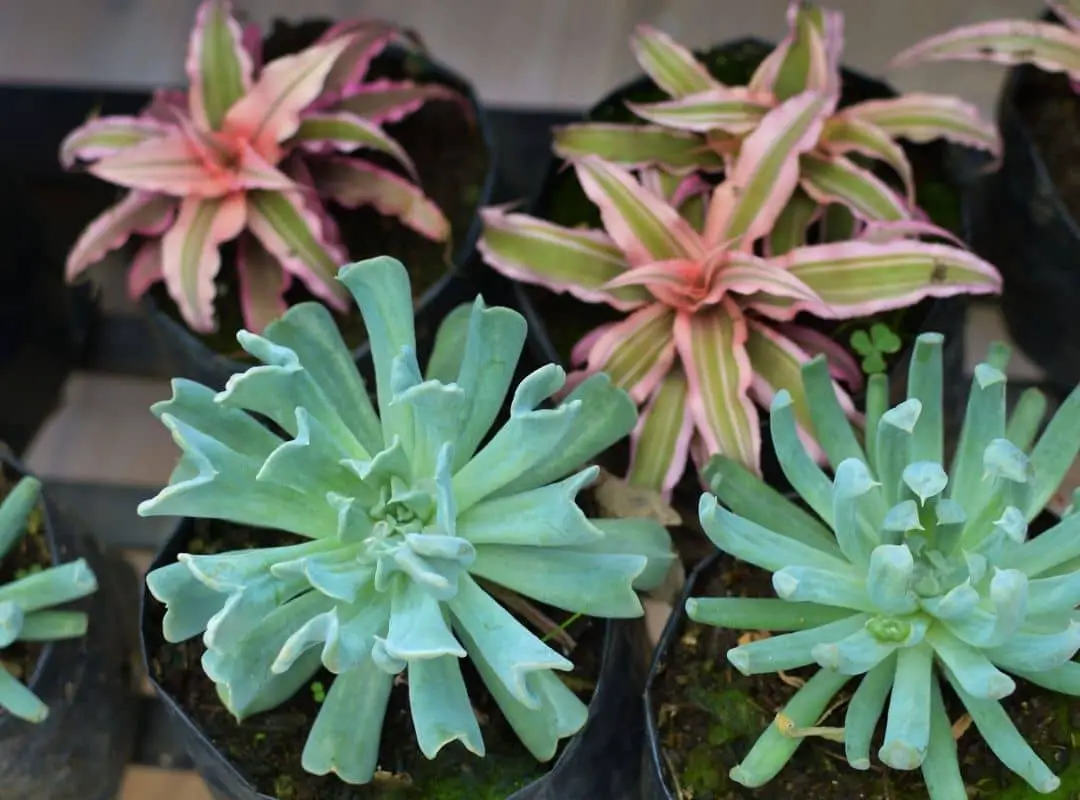
Common bugs and Illness issues
This is a disease free plant. Yet keep an eye on pests like mealy bags, vine weevil and aphids etc. chances are that we could spot aphids during the flowering season. They generally first harm the flower stalk and later on end up striking the plant as well.
Special Care tips
Topsy turvy does not require any special attention for them and will be fine with the basic requirements. However , once you spot the bottom leaves are dead and in brown color, you should remove them then and there.
It will help the plant to keep its good looks and most importantly healthiness as well. If not it will become a natural habitat for pets. . Ensure that you remove any dust also if there is any.
How do you propagate a topsy turvy ?
You could do the Propagation of topsy turvy succulents mainly in three ways. They are using by stem cutting , leaf cuttings and by offsets as well. You could propagate them through seeds also. however , avoid doing this method. In fact it is somewhat difficult when compared to others.
Yu should conduct the topsy turvy propagation in spring as this will be the start of their growth season. Before proceeding with this, it is mandatory to see first whether the soil is dry enough. This fact applies for most of the succulents.
It would be great if you could utilize a rooting hormone to provide some nutrients for the new plants once they come out. It will be useful for them since then they can handle the separation from their mother plant from that.
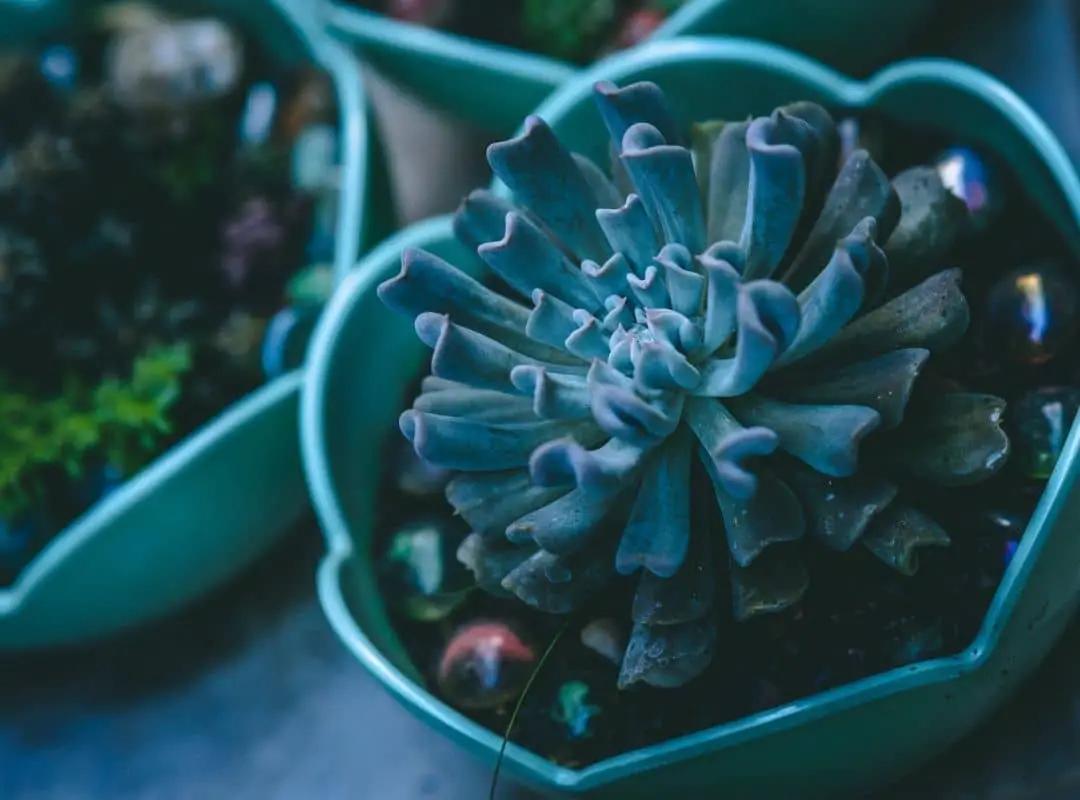
How to Propagate Echeveria Runyonii ‘Topsy Turvy’ By Leaves
First you should take a healthy leave from the mother plant. Make sure that it is one whole leaf and it has no parts left on the stems.
Then wait for several days to allow it to get callous before proceeding with this. You should use a well-draining soil mix for them. Go ahead with watering when the soil is dry and when it is essential.
How to Propagate Echeveria Runyonii ‘Topsy Turvy’ From stem Cuttings
When you are using this method to propagate , you could cut a leaf from the mother plant whilst using simple equipment like knives and scissors with hygiene.
Just like in the leaf method, it is better to wait for several days to allow it to get callous before proceeding. Follow the rest of recommendations as above for stem cutting method as well.
How to Propagate Echeveria Runyonii ‘Topsy Turvy’ From Offsets
You could propagate topsy turvy plants through offsets. It is an easy method to propagate them. First and foremost , we can remove an offset from the mother plant whilst using a sharp knife with proper hygiene.
Just as in the other methods, remove the excess old soil which is around the root. Leave them for a couple of days which will allow them to get callous.
Make sure you use well draining soil for the new plant. Water them when the soil is dry and when it is essential . Topsy turvy generates many offsets which comes around the mother rosette.
Pulling them away and replanting them in new pots is very convenient and easy. Place the pots with the newly planted offsets where they get direct sunlight for 6 hours daily. Best time to do this is spring.
Read More : Echeveria Seed Propagation | 8 Important Facts Consider
How do you repot a topsy turvy ?
You should do this only in warm seasons. Furthermore , make sure that soil is dry enough before going ahead with repotting. In the meantime, don’t forget to take off whatever old soil is left around the roots. You could use Fungicide to treat any cuts.
Topsy turvy plant benefits
Topsy turvy succulents could be handy in using it as a gift despite how familiar they are . This is perfect for succulent gardening beginners also . Further you could use these in outdoor beds, borders, ground covers, rock gardens, Mediterranean gardens and green roofs etc.
This is one good selection for terrarium as well. In addition this will make one beautiful plant once it’s grown in a container indoors. Further they attract hummingbirds as well.
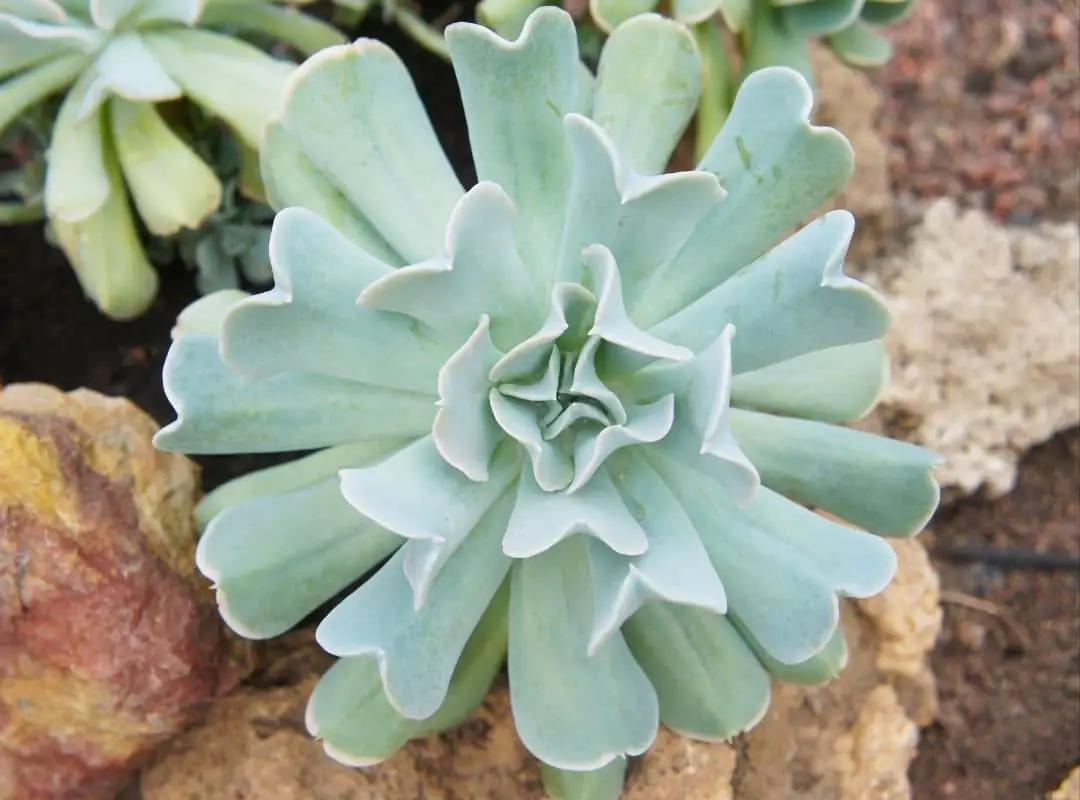
FAQ
Is topsy turvy an indoor plant
You could grow these plants indoors. However these succulents are generally known as outdoor plants. Having said that you have the option of growing them indoors as well if you can grow it in a sunny location. Succulents in general look very elegant and looking graceful once they are grown in a beautiful container or in a pot.
There is no exception for topsy turvy as well. Hence we should place them where they will get adequate sunlight for 6 hours ideally by a sunny window.
If you are someone living in aforesaid zones, you should not hesitate in growing them outdoors. Most appropriate thing to do is to plant them in a pot so that you can move it indoors or around the garden as you wish depending on the environmental conditions.
Is topsy turvy toxic?
They are non toxic plants. Being not harmful for animals as well as for humans is one more interesting fact about this succulents type. Hence, if someone thinks to own a topsy turvy succulent in their garden who has domestic pets he should not have any second thoughts. This is not edible though.
Do topsy turvy need direct sunlight
It is nor mandatory to provide direct sunlight. However daily bright sunlight for a duration of 6 hours would be very essential for their survival. They will be fine with partial sunlight for the rest of the day.
Should I mist my topsy turvy
Misting them occasionally is fine especially after propagating them and if they are dry.
Read More : 17 Care Tips For Miniature Pine Tree Succulent Gardeners
